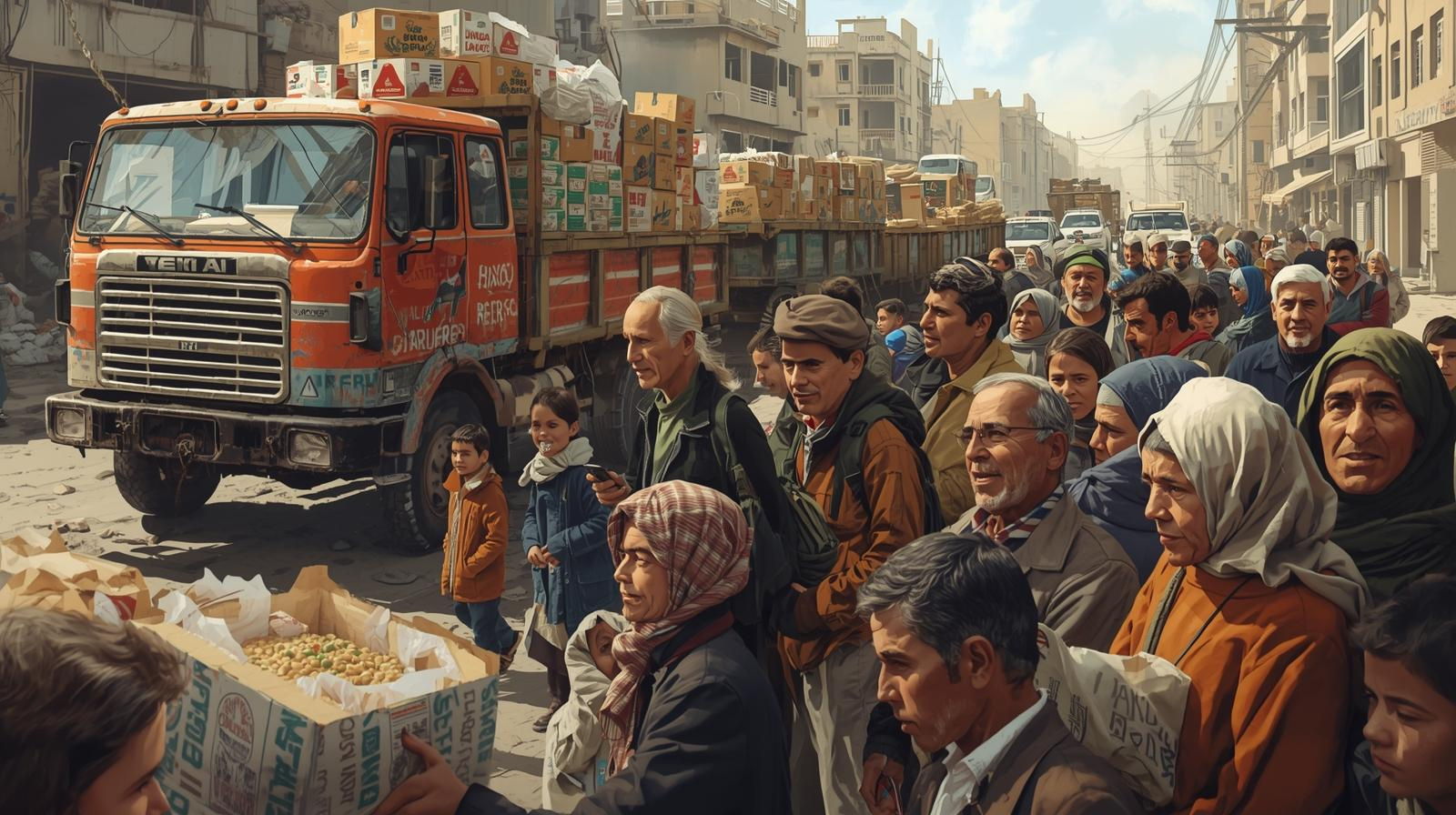UN World Food Programme ramps up supplies, but daily targets remain far from sufficient as Gaza struggles to recover from two years of devastating conflict
Gaza Food Crisis Worsens Despite Ceasefire
The humanitarian situation in Gaza remains dire despite recent increases in food aid following the US-brokered ceasefire. The United Nations World Food Programme (WFP) has reported that approximately 750 metric tonnes of food now enter Gaza daily, but this falls far short of the organization’s target of 2,000 tonnes.
The conflict over the past two years has left Gaza extensively damaged, with infrastructure destroyed and communities struggling to survive. Families rely on aid to meet basic needs, but limited border access continues to hinder the flow of essential supplies.
Limited Crossings Restrict Aid
Only two crossings into Gaza are currently open, severely restricting the movement of food and other humanitarian resources. The WFP has emphasized that these limited access points are insufficient to meet the urgent needs of the population.
Aid workers have described the situation as “precarious,” warning that without immediate escalation in aid deliveries, thousands of residents could face malnutrition and hunger.
WFP Efforts to Scale Up Supply
The World Food Programme has intensified efforts to increase deliveries, coordinating with local authorities and international partners. Trucks carrying staples such as rice, flour, beans, and cooking oil have been moving steadily into the territory, but logistical challenges and damaged infrastructure slow the distribution process.
Despite these obstacles, the WFP continues to prioritize the most vulnerable populations, including children, the elderly, and families who have lost homes in the conflict.
Impact on Local Communities
Local communities in Gaza have felt the severe impact of limited food access. Markets remain partially closed, and prices for basic goods have soared due to scarcity. Many families report relying on aid packages as their primary source of sustenance.
Schools and hospitals also face shortages, which further exacerbates the humanitarian crisis. Children attending school often arrive hungry, affecting their ability to learn and participate in daily activities.
International Support and Challenges
International organizations, including UNICEF and the Red Cross, have joined WFP in addressing Gaza’s urgent needs. However, the combination of border restrictions and ongoing security concerns continues to impede a full-scale humanitarian response.
Donor countries have pledged funds, but the pace of delivery remains a critical challenge. Officials stress that coordination between international agencies, local authorities, and donor nations is essential to prevent further deterioration of living conditions.
Health and Nutrition Concerns
Malnutrition has become a pressing concern as food deliveries remain limited. Children are particularly vulnerable, with rates of stunting and underweight conditions on the rise. Health clinics report an increase in cases related to poor diet, including vitamin deficiencies and weakened immune systems.
Medical professionals warn that without an increase in aid supplies, the population could face long-term health consequences.
Stories from Gaza Residents
Families in Gaza describe the hardships they face daily. One mother recounts rationing meals carefully to ensure her children receive at least one nutritious portion each day. Another resident explains the struggle of walking long distances to reach distribution centers, often waiting in line for hours.
These personal accounts highlight the human cost of the conflict and the importance of sustained international support.
Calls for Expanded Aid and Access
Humanitarian organizations are calling for the expansion of border crossings and an increase in food shipments. Officials stress that temporary measures are not enough and urge policymakers to implement long-term solutions that address Gaza’s structural challenges.
Infrastructure Rebuilding and Future Needs
Beyond immediate food aid, Gaza faces the enormous task of rebuilding infrastructure, including homes, schools, and hospitals. Sustainable recovery will require coordinated efforts from the international community, investment in local economies, and reconstruction projects designed to withstand future crises.
Coordination Between Agencies
Coordination between agencies such as the UN, WFP, UNICEF, and local NGOs is critical to maximize the impact of aid. Logistics teams work tirelessly to ensure that shipments reach the most affected areas, despite damaged roads and security challenges.
The Role of the Ceasefire
The US-brokered ceasefire has allowed a temporary increase in aid flows. While this is a positive step, the situation remains fragile. Any disruption to the ceasefire could halt aid deliveries and worsen the humanitarian situation.
Economic Impact of Food Shortages
Food shortages in Gaza have severe economic repercussions. Markets face inflated prices due to scarcity, and small businesses struggle to operate. The dependence on imported aid highlights the need for sustainable local food production solutions.
Psychological Effects on Children
The prolonged conflict and food scarcity have taken a psychological toll on children. Anxiety, stress, and trauma are widespread among young residents who have experienced hunger and displacement. Programs offering psychosocial support are critical alongside nutritional aid.
International Advocacy and Funding
Global advocacy efforts continue to bring attention to Gaza’s crisis. Donor nations are being urged to provide additional financial resources, while media coverage helps maintain international awareness. Funding gaps remain a significant obstacle to scaling up relief efforts.
Long-Term Solutions
Experts stress that beyond emergency aid, Gaza requires long-term strategies to ensure food security. Agricultural projects, infrastructure reconstruction, and economic initiatives are necessary to reduce dependency on international aid.
Community Resilience
Despite the challenges, Gaza’s communities demonstrate remarkable resilience. Local leaders and volunteers mobilize to distribute aid, organize support networks, and maintain essential services. Their efforts are vital to sustaining life amid ongoing hardships.
